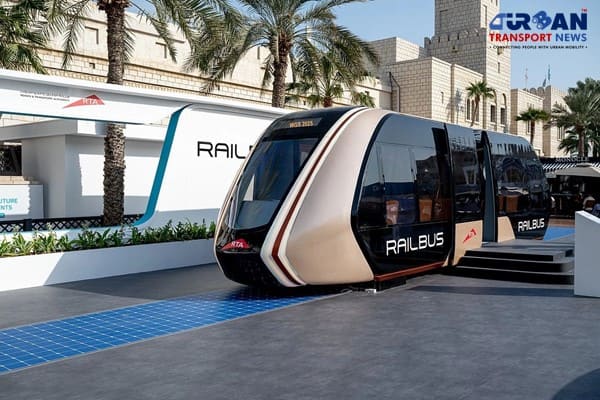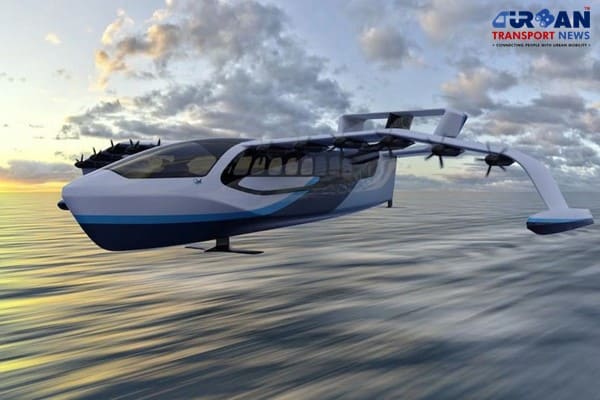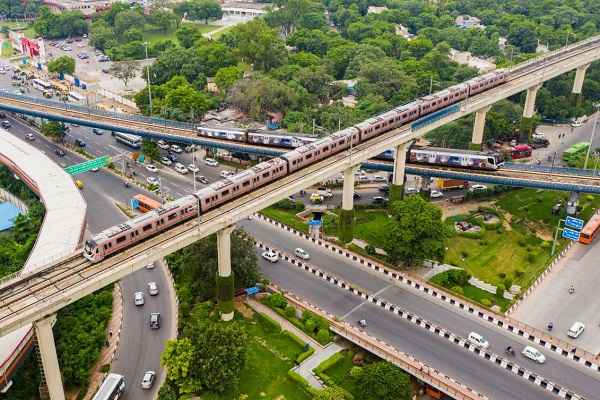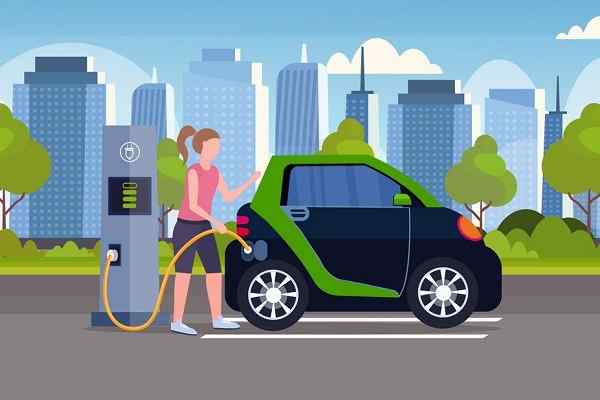 Women Powering India’s Electric Mobility Revolution
Women Powering India’s Electric Mobility Revolution Rail Chamber Launched to Strengthen India’s Global Railway Leadership
Rail Chamber Launched to Strengthen India’s Global Railway Leadership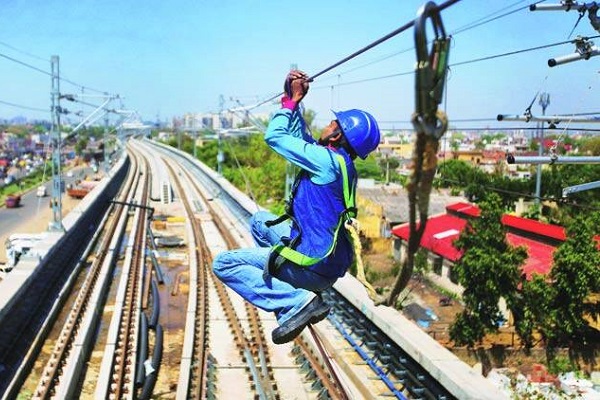 Wage and Hour Enforcement Under the Massachusetts Wage Act and Connecticut Labor Standards
Wage and Hour Enforcement Under the Massachusetts Wage Act and Connecticut Labor Standards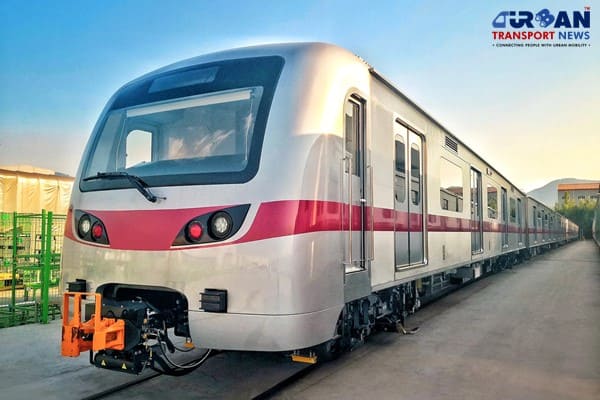 MRT‑7: Manila’s Northern Metro Lifeline on the Horizon
MRT‑7: Manila’s Northern Metro Lifeline on the Horizon Delhi unveils ambitious Urban Mobility Vision: Luxury Metro Coaches, New Tunnels and Pod Taxi
Delhi unveils ambitious Urban Mobility Vision: Luxury Metro Coaches, New Tunnels and Pod Taxi Qatar approves Saudi Rail Link Agreement, Accelerating Gulf Railway Vision 2030
Qatar approves Saudi Rail Link Agreement, Accelerating Gulf Railway Vision 2030 UP Govt plans to introduce Water Metro services in Ayodhya, Varanasi & Prayagraj
UP Govt plans to introduce Water Metro services in Ayodhya, Varanasi & Prayagraj India’s First Urban Ropeway begins Trial Run in Varanasi, Set to carry 1 Lakh passengers daily
India’s First Urban Ropeway begins Trial Run in Varanasi, Set to carry 1 Lakh passengers daily India and Bhutan to Build First-Ever Rail Link: ₹4,033 Cr Project to Boost Regional Connectivity
India and Bhutan to Build First-Ever Rail Link: ₹4,033 Cr Project to Boost Regional Connectivity Patna to launch Eco-Friendly Water Metro; Trial Run soon between Digha and Kangan Ghats
Patna to launch Eco-Friendly Water Metro; Trial Run soon between Digha and Kangan Ghats
Urban Mobility - Challenges and Solutions
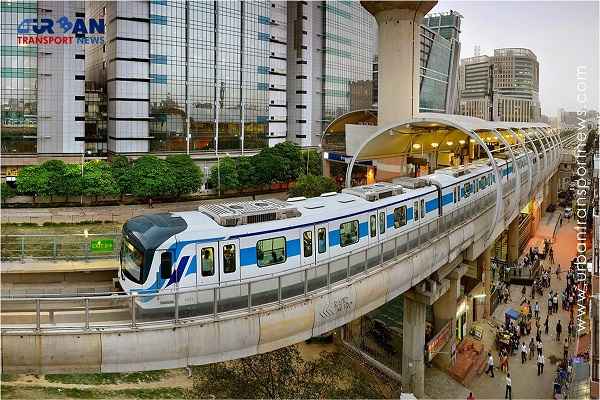
Urban mobility refers to the movement of people and goods within urban areas, typically within cities or densely populated regions. It plays a crucial role in ensuring the mobility of individuals, facilitating economic activities, and shaping the overall development of urban environments. Various modes of transportation are involved in urban transport, including public transport systems, private vehicles, cycling infrastructure, and pedestrian networks.
Key aspects and modes of urban mobility
1. Public Transportation: Public transport systems are essential for efficient urban mobility. They typically include buses, trains, trams, subways, light rail, and ferries. These systems are designed to provide affordable, convenient, and sustainable transportation options for a large number of people. Public transportation helps reduce congestion, decrease pollution levels, and improve accessibility within cities.
2. Private Vehicles: Private vehicles, such as cars, motorcycles, and bicycles, are commonly used for urban transportation. While private cars offer flexibility and convenience, they contribute to traffic congestion and environmental issues. Encouraging the use of alternative modes, such as carpooling, electric vehicles, or cycling, can help mitigate these challenges.
3. Cycling Infrastructure: Creating dedicated cycling lanes, bike-sharing programs, and promoting cycling as a means of transport can help reduce traffic congestion, promote physical activity, and improve air quality in urban areas. Many cities are investing in cycling infrastructure to make it safer and more accessible for cyclists.
4. Pedestrian Networks: Enhancing pedestrian infrastructure is crucial for promoting walkability and creating vibrant urban spaces. Wider sidewalks, pedestrian-friendly crossings, and the development of pedestrian-only zones contribute to improved safety, accessibility, and quality of life in urban areas.
5. Integrated Transport Systems: Implementing integrated transport systems aims to improve the coordination and connectivity between various modes of transport. This can involve creating seamless connections between different types of public transport, integrating fare systems, and providing real-time information to passengers to enhance their overall travel experience.
6. Smart Transportation Solutions: The use of technology and data in urban transport is becoming increasingly prevalent. Intelligent transportation systems, such as real-time traffic monitoring, smart parking systems, and ride-sharing platforms, help optimize the use of existing infrastructure and improve the overall efficiency of urban transport networks.
7. Sustainable Transport Initiatives: Many cities are adopting sustainable transport initiatives to reduce the environmental impact of urban transportation. This includes promoting the use of electric vehicles, investing in renewable energy sources for public transport, implementing low-emission zones, and encouraging the shift towards walking, cycling, and public transport.
Efficient and sustainable urban transport is vital for addressing congestion, reducing pollution, and improving the livability of cities. It requires a holistic approach, combining multiple modes of transport, infrastructure development, policy interventions, and community engagement to create a well-connected and environmentally friendly urban transport system.
Challenges
Urban mobility faces several challenges that impact its efficiency, sustainability, and overall effectiveness. Here are some common challenges associated with urban mobility:-
1. Traffic Congestion: Traffic congestion is a significant challenge in urban areas, leading to delays, increased travel times, and reduced productivity. Growing populations, inadequate infrastructure, and a high reliance on private vehicles contribute to congestion. Addressing congestion requires a combination of infrastructure improvements, traffic management strategies, and promoting alternative modes of transport.
2. Limited Infrastructure: Many cities struggle with limited or outdated infrastructure to support the growing demand for urban transport. Insufficient road capacity, inadequate public transport systems, and a lack of cycling and pedestrian infrastructure hinder efficient mobility. Expanding and upgrading infrastructure is crucial to accommodate the needs of urban transport and promote sustainable modes of travel.
3. Environmental Impact: Urban transport is a significant contributor to air pollution and greenhouse gas emissions. Private vehicles, particularly those running on fossil fuels, emit pollutants that harm air quality and contribute to climate change. Encouraging the use of cleaner and greener modes of transport, such as electric vehicles and public transport, is essential for mitigating the environmental impact of urban transport.
4. Lack of Integration: Fragmented and poorly integrated transport systems pose challenges for seamless travel experiences. Lack of coordination between different modes of transport, such as buses, trains, and bicycles, can result in inconvenient transfers, time-consuming journeys, and reduced efficiency. Implementing integrated transport systems that facilitate easy transfers and provide comprehensive information to travelers is crucial.
5. Affordability and Accessibility: Accessibility to affordable transport options is essential for ensuring equitable mobility within urban areas. Limited access to public transport, high fares, and insufficient coverage in certain neighborhoods can lead to transport poverty and social exclusion. Improving affordability, expanding public transport networks, and addressing accessibility gaps are important considerations in urban transport planning.
6. Safety and Security: Ensuring the safety and security of commuters is a significant challenge in urban transport. Issues such as traffic accidents, crime, and harassment can discourage people from using public transport or walking and cycling. Implementing safety measures, enhancing lighting and surveillance, and improving public transport security contribute to creating a safe and secure urban transport environment.
7. Behavioral Change: Encouraging behavioral change and shifting travel patterns from private vehicles to sustainable modes of transport can be challenging. Many individuals are accustomed to using private cars due to convenience, habit, or lack of viable alternatives. Promoting awareness, providing incentives, and implementing policies that incentivize sustainable modes of transport can help drive behavioral change.
8. Funding and Financial Sustainability: Developing and maintaining urban transport infrastructure requires significant financial resources. Funding constraints can limit the ability of cities to invest in new projects, upgrade existing systems, and ensure ongoing maintenance. Exploring innovative financing mechanisms, public-private partnerships, and securing sustainable funding sources are crucial for the long-term financial sustainability of urban transport.
Addressing these challenges requires a comprehensive approach that includes urban planning, policy interventions, infrastructure development, and community engagement. By prioritizing sustainable and efficient urban transport systems, cities can improve mobility, reduce congestion, enhance environmental sustainability, and foster inclusive and livable urban environments.
Recommended Solutions
To address the urban mobility issues and create more efficient and sustainable urban transport systems, several solutions can be implemented. Here are some key solutions:
1. Integrated and Multimodal Transport: Developing integrated transport systems that seamlessly connect different modes of transport, such as buses, trains, trams, cycling infrastructure, and pedestrian networks, can enhance the overall efficiency and convenience of urban mobility. This includes improving intermodal connections, integrating fare systems, and providing real-time information to travelers.
2. Prioritize Public Transport: Encouraging the use of public transport by improving its reliability, frequency, and affordability can help reduce congestion and promote sustainable urban mobility. Investing in the expansion of public transport networks, upgrading infrastructure, and implementing measures such as dedicated bus lanes or priority signals can enhance the attractiveness and efficiency of public transport.
3. Cycling and Walking Infrastructure: Developing dedicated cycling lanes, pedestrian-friendly infrastructure, and safe walking routes can encourage more people to choose active modes of transport. Investing in cycling infrastructure, bike-sharing programs, and creating pedestrian-friendly zones can improve safety, reduce traffic congestion, and promote healthier and greener travel options.
4. Carpooling and Ridesharing: Promoting carpooling and ridesharing initiatives can help reduce the number of private vehicles on the road, alleviate congestion, and lower carbon emissions. Implementing carpooling lanes, facilitating carpool matching services, and providing incentives for ridesharing can encourage more people to share rides and reduce the overall number of vehicles on the road.
5. Smart and Data-Driven Solutions: Leveraging technology and data can optimize urban transport systems. Intelligent transportation systems can provide real-time traffic information, optimize traffic flow, and improve the overall efficiency of transport networks. Smart parking systems, ride-hailing platforms, and mobile applications that offer travel planning and real-time updates can enhance the convenience and effectiveness of urban mobility.
6. Electrification and Alternative Fuels: Promoting the use of electric vehicles (EVs) and alternative fuels can significantly reduce emissions and improve air quality. Incentives such as subsidies, charging infrastructure development, and implementing low-emission zones can encourage the adoption of EVs and cleaner transportation options.
7. Urban Planning and Land Use: Integrating urban planning and land use policies with transport planning is crucial for creating compact and connected urban environments. Designing cities with mixed land-use patterns, focusing on transit-oriented development, and creating walkable neighborhoods can reduce travel distances, promote active modes of transport, and decrease dependence on private vehicles.
8. Behavioral Change and Awareness: Encouraging behavioral change and promoting sustainable travel habits is essential. Public awareness campaigns, education programs, and incentives for choosing sustainable modes of transport can help shift mindsets and travel behaviors towards more environmentally friendly options.
9. Collaboration and Partnerships: Collaboration between various stakeholders, including government authorities, transport operators, urban planners, and community organizations, is crucial for developing and implementing effective urban mobility solutions. Public-private partnerships can facilitate the integration of innovative technologies, financing, and expertise to address urban transport challenges.
10. Sustainable Funding Mechanisms: Securing sustainable funding sources for urban transport infrastructure and services is vital. Governments can explore options such as dedicated transport funds, public-private partnerships, congestion pricing, and value capture mechanisms to ensure ongoing investment in urban mobility.
Implementing a combination of these solutions, tailored to the specific needs and context of each city, can help create more efficient, sustainable, and inclusive urban transport systems that improve mobility, reduce congestion, and enhance the overall quality of life in urban areas.
Cities with good urban transport systems
Several cities around the world have made significant progress in developing efficient and sustainable urban transport systems. Here are some examples of cities known for their well-regarded urban transport systems:
1. Singapore: Singapore is often cited as a model city for urban transport. It has a comprehensive and integrated transport system that includes an extensive metro (MRT) network, efficient bus services, and well-designed cycling infrastructure. Singapore's efficient traffic management, smart technology integration, and congestion pricing schemes contribute to its reputation for excellent urban mobility.
2. Tokyo, Japan: Tokyo boasts one of the world's most extensive and efficient urban transport systems. The city's extensive metro (Tokyo Metro and Toei Subway) and suburban rail networks provide seamless connectivity. Tokyo's transport system is known for its punctuality, frequency, and high capacity, allowing millions of residents and visitors to navigate the city easily.
3. Copenhagen, Denmark: Copenhagen is renowned for its commitment to sustainable transportation. The city prioritizes cycling infrastructure, with an extensive network of bike lanes and dedicated cycling bridges. It also has an efficient public transport system comprising buses, trains, and a metro system, which is expanding. Copenhagen's integrated approach to urban transport promotes active modes of transport and reduces reliance on private cars.
4. Curitiba, Brazil: Curitiba is often recognized for its innovative and efficient bus rapid transit (BRT) system. The city's BRT system, known as the Rede Integrada de Transporte (RIT), offers fast, reliable, and affordable transportation options. Curitiba's well-planned bus corridors, high-capacity buses, and efficient operations have served as a model for other cities seeking sustainable transport solutions.
5. Zurich, Switzerland: Zurich is known for its exceptional public transport network, which includes trams, buses, trains, and boats. The city's integrated ticketing system allows seamless transfers across different modes of transport. Zurich's reliable and frequent public transport services, coupled with pedestrian-friendly infrastructure, contribute to its efficient and sustainable urban mobility.
6. Vancouver, Canada: Vancouver is often praised for its sustainable and multimodal transport system. The city has an extensive network of buses, SkyTrain (automated light rapid transit), and SeaBus (passenger ferry service). Vancouver's commitment to active transportation is evident in its cycling infrastructure and initiatives promoting walking and cycling as viable transport options.
7. Helsinki, Finland: Helsinki is known for its innovative approach to urban transport. The city aims to make private car ownership obsolete by integrating various modes of transport into a single platform. The concept of "Mobility as a Service" (MaaS) allows users to access and pay for multiple transport options through a single app. Helsinki's efficient public transport, cycling infrastructure, and forward-thinking initiatives make it a notable city for urban mobility.
These cities serve as examples of urban transport systems that prioritize efficiency, sustainability, and accessibility. However, it's important to note that each city's success is influenced by a combination of factors, including political will, urban planning, investment, and cultural context.





